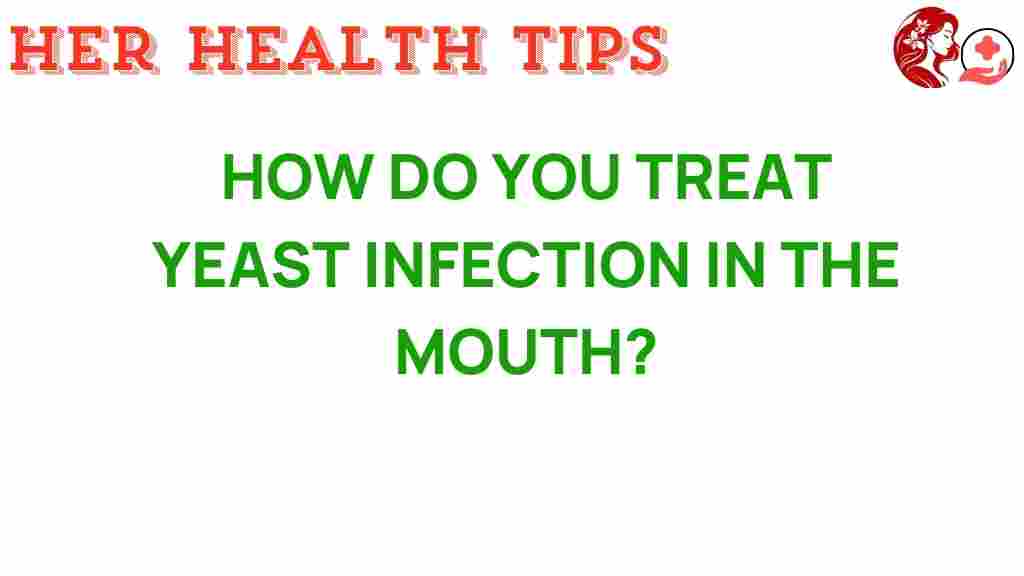Unveiling the Secrets: How to Effectively Treat Oral Yeast Infections
Oral yeast infections, commonly known as thrush, are a prevalent concern that can significantly impact your oral health. These infections are caused by an overgrowth of the Candida yeast, which normally resides in the mouth but can become problematic under certain conditions. Understanding the symptoms, treatment options, and prevention strategies is crucial for managing this condition effectively. In this article, we will explore the ins and outs of yeast infections, focusing on their treatment and prevention.
Understanding Yeast Infections
A yeast infection in the mouth typically manifests as thrush. It’s important to recognize the symptoms early to begin appropriate treatment. Here are some common signs of oral thrush:
- White patches on the tongue, inner cheeks, or gums
- Redness and soreness in the affected areas
- Pain or difficulty swallowing
- Loss of taste
- Cracking at the corners of the mouth
- Burning sensation in the mouth
Causes of Oral Yeast Infections
Several factors can lead to the overgrowth of Candida in the mouth, including:
- Antibiotic use, which disrupts the natural balance of bacteria
- Weakened immune system due to conditions like HIV/AIDS or cancer treatments
- Diabetes, which can increase sugar levels in the saliva
- Dry mouth conditions that reduce saliva’s antifungal properties
- Poor oral hygiene
- Wearing dentures that do not fit properly
Treatment Options for Oral Thrush
When it comes to treating a yeast infection in the mouth, several effective options are available. Here’s a step-by-step guide to managing oral thrush:
1. Consult a Healthcare Provider
Before initiating any treatment, it’s essential to consult a healthcare professional. They can confirm the diagnosis and rule out other potential causes for your symptoms.
2. Antifungal Medications
Antifungal medications are the primary treatment for oral thrush. Commonly prescribed antifungal treatments include:
- Nystatin: An oral suspension that is swished in the mouth and swallowed.
- Fluconazole: An oral pill that may be used for more resistant cases.
- Clotrimazole: A lozenge that dissolves in the mouth to treat localized infections.
It’s important to follow your healthcare provider’s instructions regarding dosage and duration of treatment to effectively eliminate the infection.
3. Maintain Good Oral Hygiene
Good oral hygiene is crucial in managing and preventing yeast infections. Here are some tips:
- Brush your teeth at least twice a day and floss daily.
- Use a soft toothbrush to avoid irritation.
- Rinse your mouth with water after meals.
- Regularly clean dentures and remove them at night.
4. Dietary Considerations
Modifying your diet may also help in managing oral thrush. Consider the following:
- Reduce sugar intake, as sugar can promote yeast growth.
- Incorporate probiotics to help restore the natural flora in your mouth.
- Eat a balanced diet rich in fruits, vegetables, and whole grains.
5. Holistic Remedies
Some individuals may prefer holistic remedies as part of their treatment plan. While more research is needed, some methods have shown promise:
- Coconut oil: Known for its antifungal properties, it can be used as a mouth rinse.
- Apple cider vinegar: Diluting it in water may help balance the pH levels in the mouth.
- Garlic: Consuming raw garlic can boost your immune system and combat yeast.
Prevention Strategies
Preventing oral yeast infections is as important as treating them. Here are some essential strategies:
- Practice good oral hygiene consistently.
- Avoid overusing antibiotics unless necessary.
- Keep your mouth moist; stay hydrated and consider using saliva substitutes if needed.
- Limit sugar and refined carbohydrates in your diet.
- Regularly check your dentures for proper fit and cleanliness.
Troubleshooting Tips
If you find that your yeast infection persists despite treatment, consider the following troubleshooting tips:
- Revisit your healthcare provider to assess the treatment plan.
- Ensure you are following all medication instructions accurately.
- Evaluate your diet for high sugar contents or other potential triggers.
- Investigate any underlying health conditions that may be contributing to the overgrowth of Candida.
Conclusion
Oral yeast infections, or thrush, can be a frustrating and uncomfortable experience, but with the right knowledge and treatment options, they can be effectively managed. Understanding the symptoms, seeking appropriate antifungal treatments, and maintaining good oral health are essential steps in overcoming this condition. By implementing preventive measures and considering holistic remedies, you can take charge of your oral health and reduce the likelihood of future infections.
If you’re looking for more information on yeast infections and oral health, check out this resource. For further reading on holistic approaches, visit this external link.
This article is in the category Conditions and created by HerHealthTips Team
